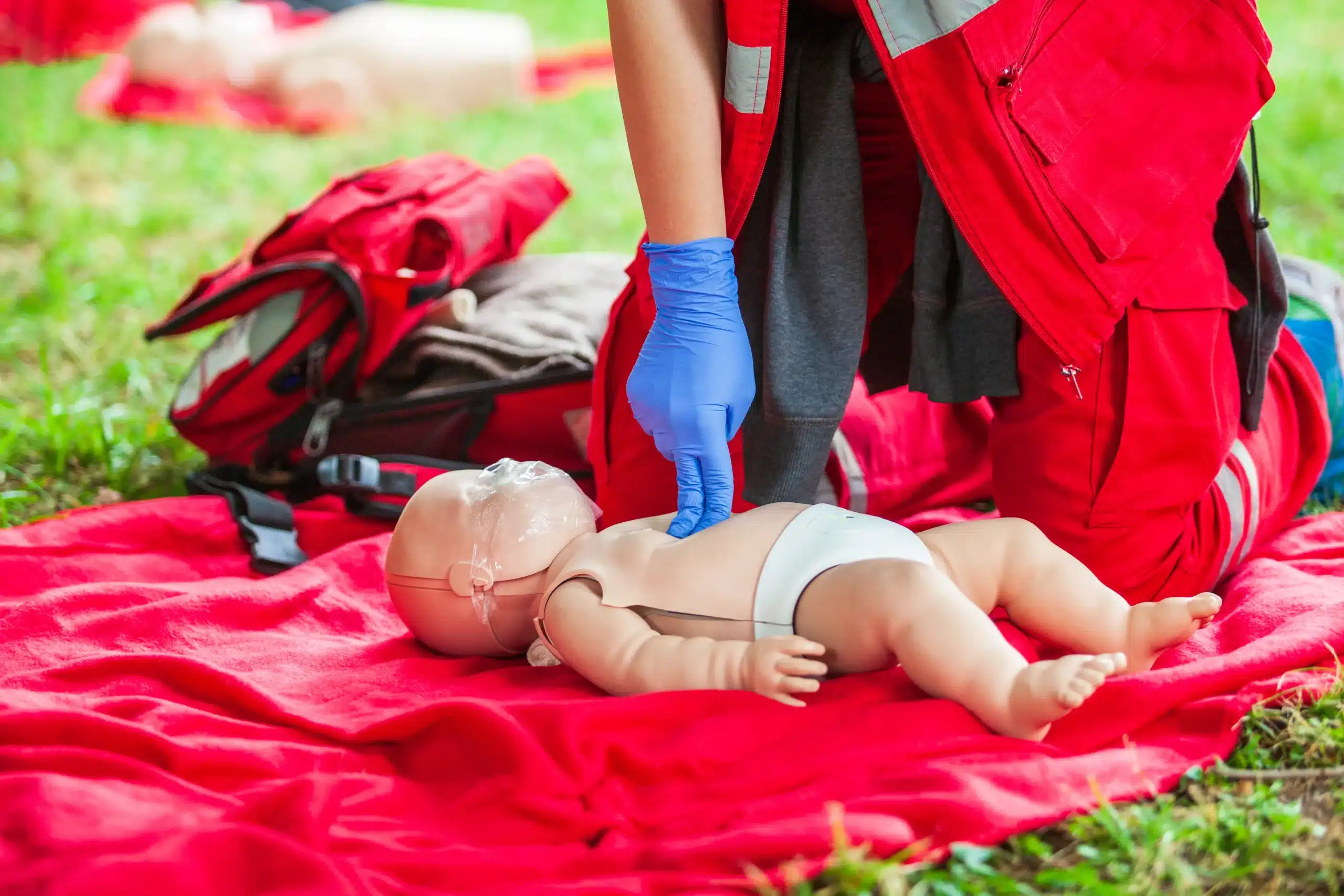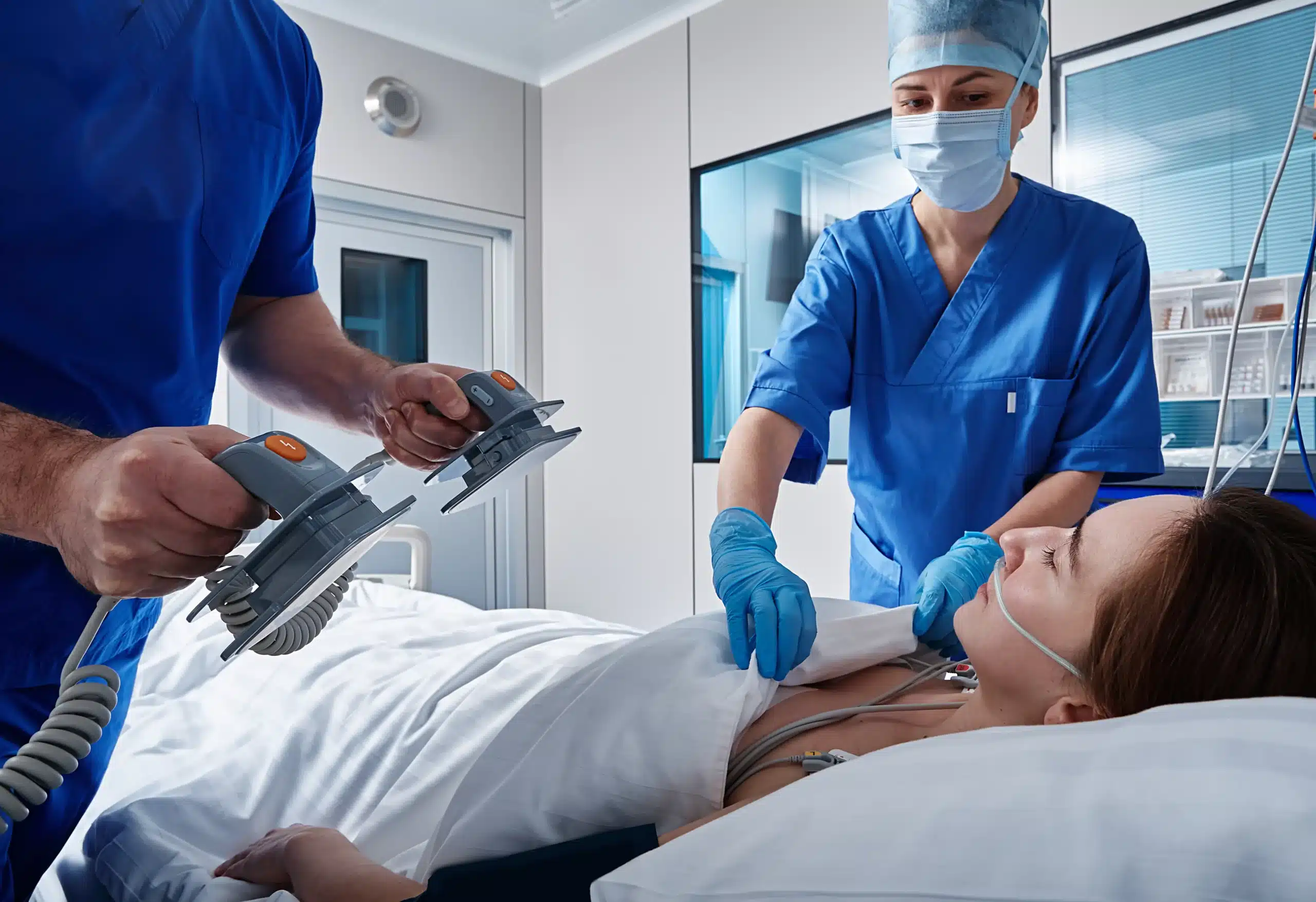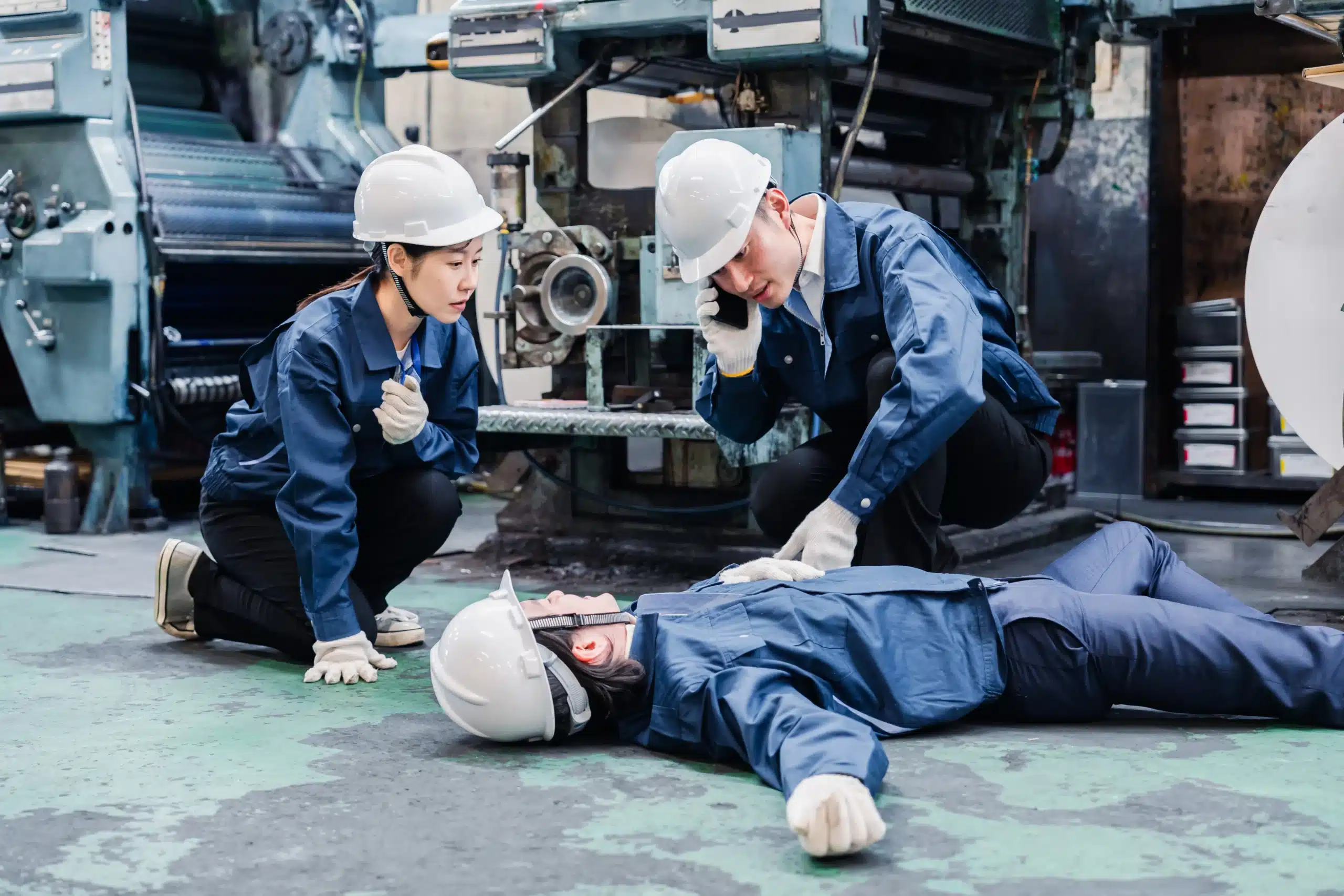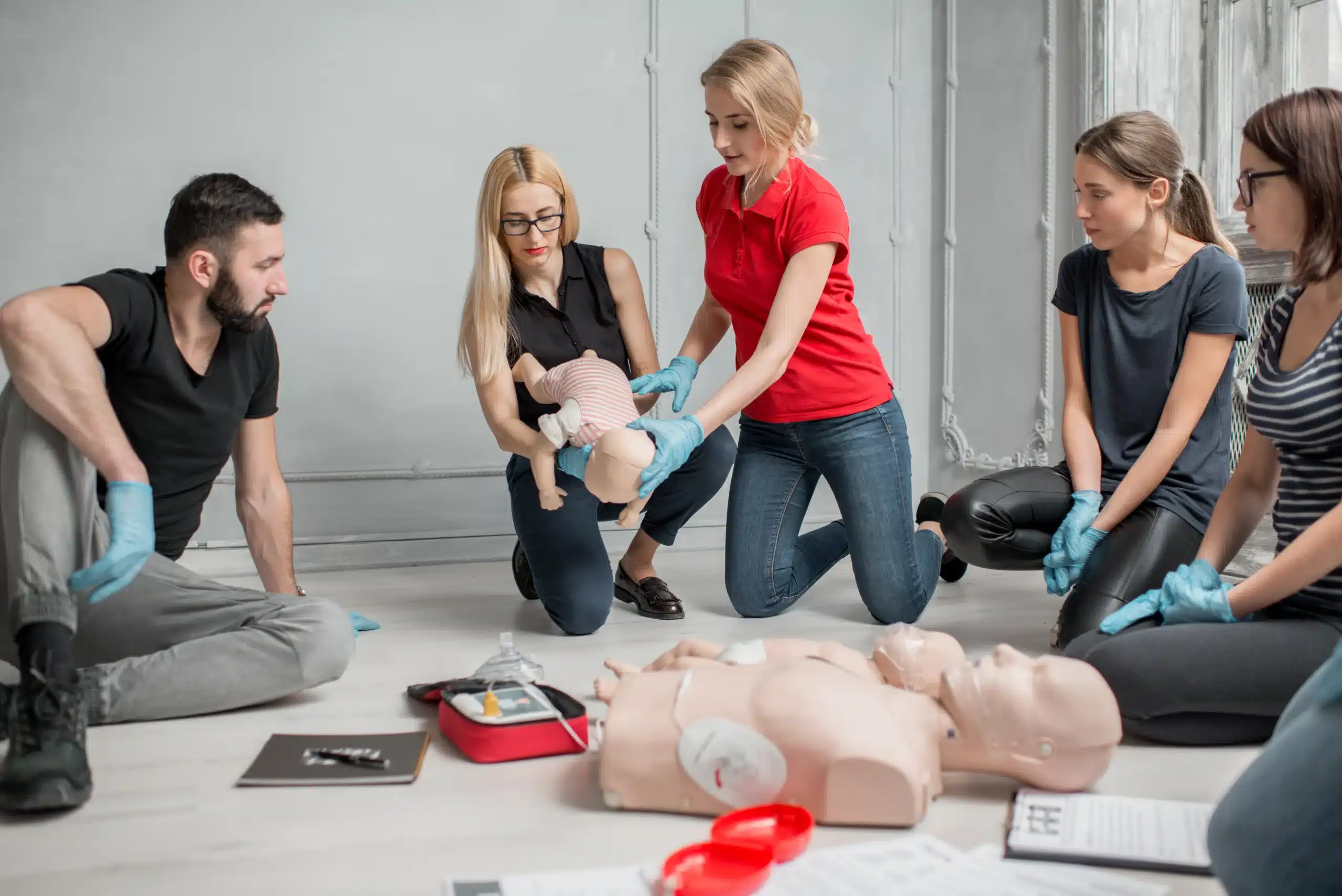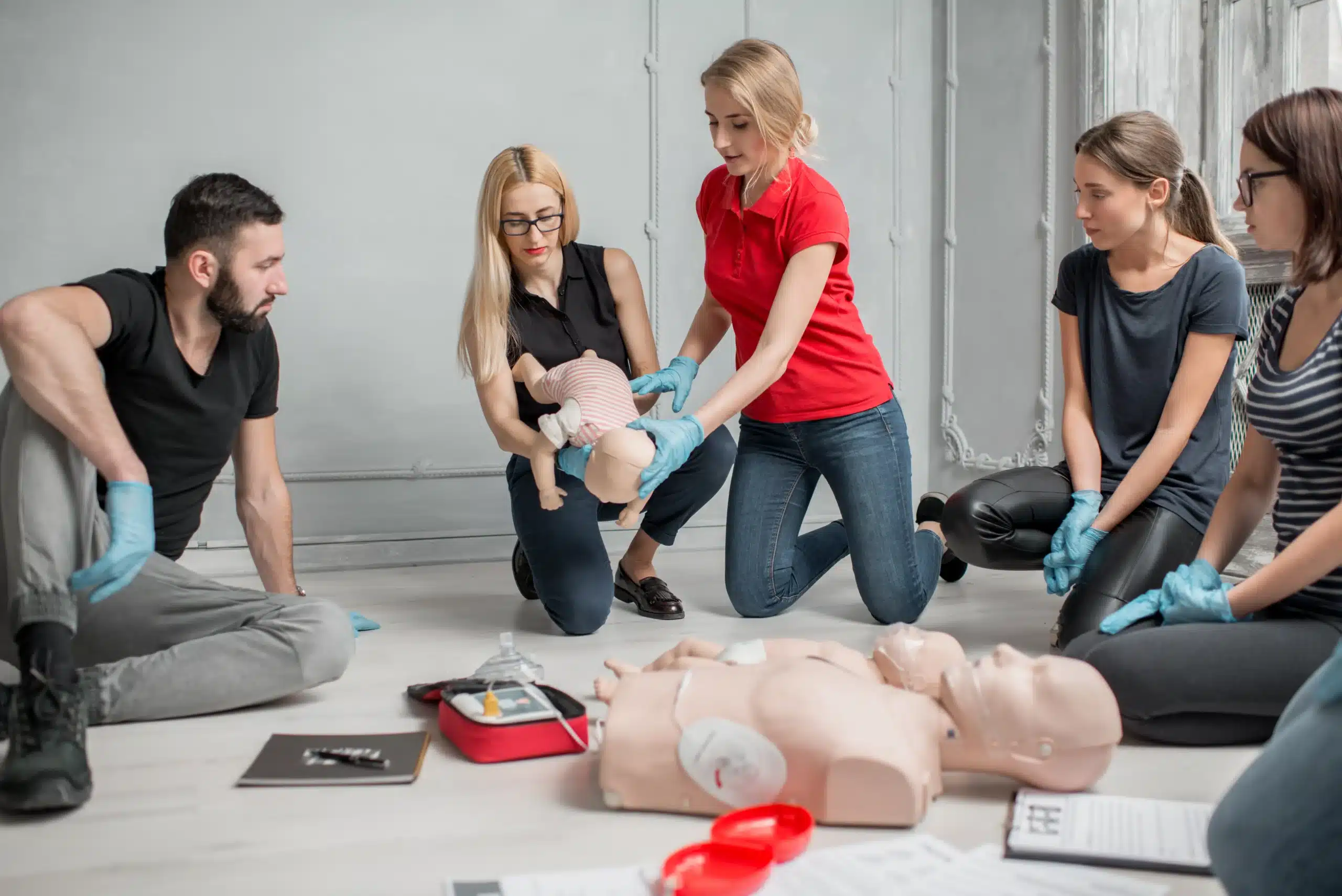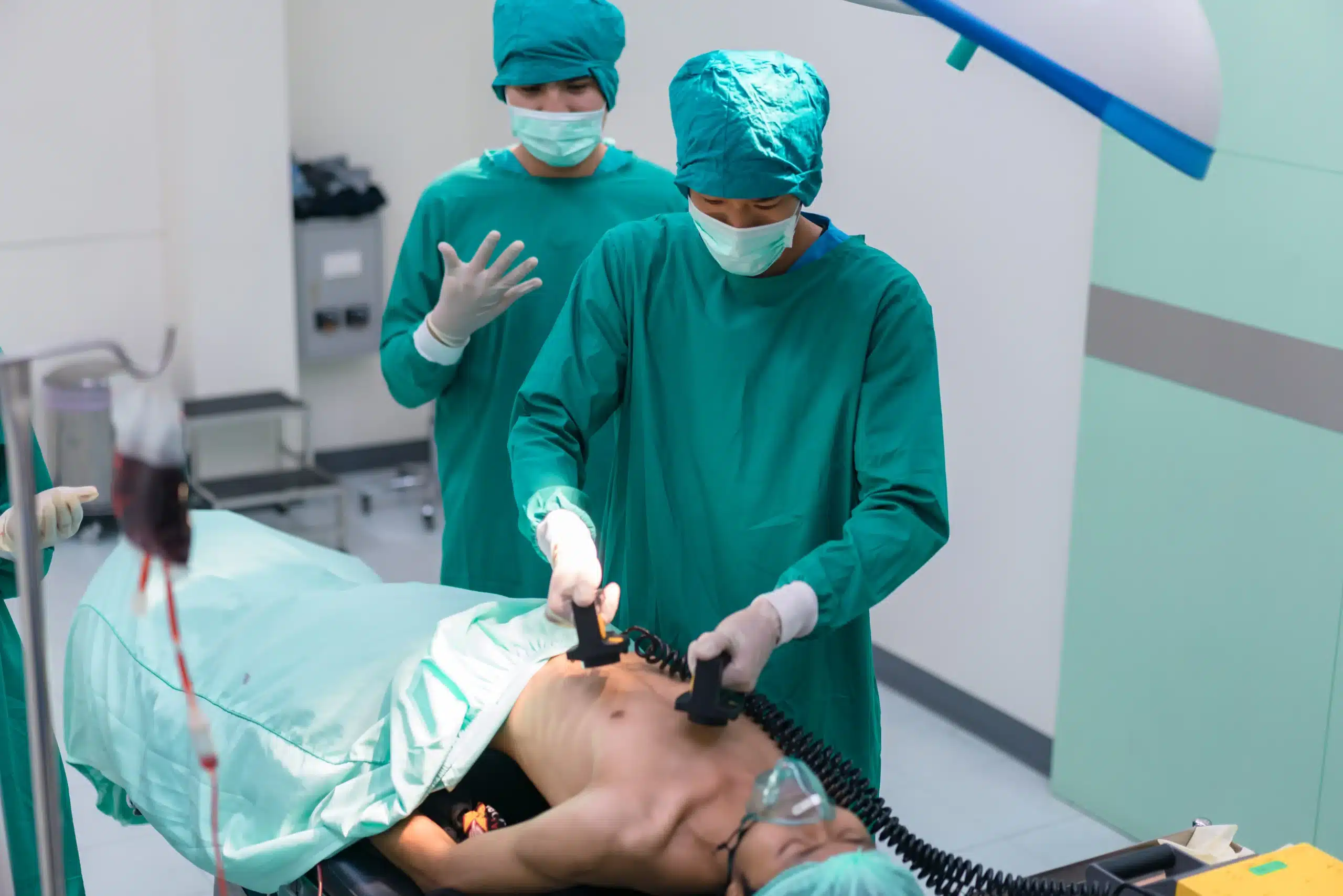We’ve all been there – a sudden accident, a medical emergency, and that feeling of helplessness when we don’t know what to do. First-aid training equips you with the skills and confidence to respond effectively in such situations, turning those feelings of helplessness into empowered action. If you’ve been searching for “first-aid classes near me,” this guide is your starting point. We’ll explore the various types of first-aid training available, discuss the benefits of becoming certified, and provide practical tips for finding the right course for you. From basic life support to specialized certifications, we’ll cover everything you need to know to become a more prepared and confident individual.
Key Takeaways
- First aid skills are essential for everyone: Learning basic first aid techniques, including CPR and AED use, empowers you to respond effectively to emergencies and potentially save lives. Find a course that fits your lifestyle and individual needs.
- Finding a reputable training provider matters: Look for certified instructors and verify that the certification aligns with nationally recognized organizations like the American Heart Association or American Red Cross. Consider factors like cost, schedule, and location when choosing a class.
- First-aid training offers lasting benefits: Being prepared for emergencies brings peace of mind and can enhance your professional qualifications. These skills make you a valuable resource for your community and create a safer environment for everyone.
What are First-Aid Classes?
First-aid classes teach you how to respond to medical emergencies. These courses cover a range of life-saving techniques, from CPR and wound care to recognizing and managing common injuries like cuts, burns, and sprains. Think of it as equipping yourself with the skills to stabilize a situation and minimize harm until professional medical help arrives. First-aid training empowers you to take action and potentially save lives.
First-aid training isn’t one-size-fits-all. Different certification levels match specific needs. Basic first-aid courses usually cover essential skills like CPR, using an AED (automated external defibrillator), and handling common injuries. More advanced training might explore specialized areas like wilderness medicine or pediatric first aid. Whether you’re a parent, teacher, hiker, or healthcare professional, there’s a first-aid course designed for you. Learning these skills prepares you for emergencies and gives you the confidence to respond effectively under pressure. First-aid and CPR training are vital tools for anyone who wants to be prepared.
Explore First-Aid Class Types
First-aid classes give you the skills to handle medical emergencies. Different courses cater to various needs and experience levels. Let’s explore some common options.
Basic First Aid
Basic first-aid courses offer foundational knowledge. You’ll learn how to respond to common injuries like cuts, burns, and sprains. These courses also cover essential life-saving techniques like CPR and how to use an automated external defibrillator (AED). Basic first aid is a great starting point for anyone who wants to be prepared for everyday emergencies.
CPR and AED Training
CPR and AED training focuses on cardiopulmonary resuscitation and using an AED. You’ll learn to recognize the signs of cardiac arrest and perform chest compressions and rescue breaths. This training is crucial for everyone, but especially helpful for healthcare providers, childcare professionals, and those in high-risk environments. Some courses combine CPR training with basic first aid.
Specialized First-Aid Courses
Beyond the basics, you can find specialized first-aid courses for specific situations. For instance, wilderness first aid prepares you for medical emergencies in remote outdoor settings. Pediatric first aid focuses on the unique needs of infants and children, making it invaluable for parents, caregivers, and teachers. Consider your environment and potential risks when choosing a specialized course. Other specialized courses might include pet first aid or first aid for specific workplaces.
Find First-Aid Classes Near You
Finding the right first-aid class is easier than you think. Whether you need a basic course or specialized training, a few simple strategies can help you find the perfect fit.
Search Online
Start with a quick online search using keywords like “first aid training,” “CPR classes,” or “first aid certification near me.” A Google search can uncover numerous local options. You can also explore online directories for first-aid training providers. Many training centers, like Milpitas CPR Classes, offer comprehensive programs that combine CPR and first aid, giving you a well-rounded skill set. Reading online reviews offers insights into other students’ experiences.
Check Local Resources
Reach out to your local community centers, hospitals, and fire departments. These organizations often offer first-aid and CPR training programs or can connect you with certified instructors. Also, check with your workplace or professional organizations, as they may offer training discounts.
Verify Credentials
Before signing up, verify the instructor’s credentials and the certification offered. Ensure the training provider is reputable and aligned with nationally recognized organizations like the American Heart Association or the American Red Cross. Confirm the certification meets any requirements for your job or personal goals. A quality provider will readily share information about their certifications. Choosing the right provider ensures you receive accurate and reliable training.
What Happens in a First-Aid Class?
Knowing what to expect can help you feel prepared and confident going into your first-aid training. Here’s a glimpse at what generally takes place:
Class Format and Duration
First-aid classes blend instruction, demonstrations, and hands-on practice. Your instructor will explain key concepts and techniques, then show you how to perform them. Expect a combination of lectures, videos, and interactive discussions. Class duration varies depending on the type of certification. Basic first-aid and CPR courses often take a few hours, while more advanced certifications like ACLS or PALS require a longer commitment.
Hands-on Practice
Hands-on practice is crucial for mastering first-aid skills. You’ll practice techniques like CPR on mannequins, bandaging simulated wounds, and applying splints. This practical experience builds your muscle memory and confidence, preparing you to respond effectively in real emergencies. Many classes, including those for RQI certification, emphasize this hands-on learning approach.
Course Materials and Equipment
Your first-aid class will provide all the necessary equipment and materials for training. This typically includes mannequins for CPR practice, bandages, dressings, and other supplies. You’ll also receive a student handbook or other resources to guide you through the course content. These materials will also serve as a helpful reference after you complete your training. After successfully completing the course and passing any required exams, you’ll receive an official certification card valid for two years.
Costs and Value of First-Aid Training
Knowing the price range for first-aid training and what influences it can help you budget and find the best value. This section breaks down typical costs, factors that affect pricing, and potential discounts.
Typical Prices
Costs for first-aid and CPR training vary. Basic bystander CPR classes typically range from $30 to $60. More advanced courses, like those for CPR instructors, require a greater investment, ranging from $1,300 to $5,100, depending on the training method and certifying organization. Becoming a certified CPR instructor involves a substantial commitment of both time and finances, as detailed in this article on CPR instructor costs. Remember that prices can differ based on location and the specific training center.
Factors Affecting Cost
Several factors influence the overall cost of your first-aid training. The type of course you choose plays a significant role. Basic first-aid will usually be less expensive than specialized courses like wilderness first-aid or pediatric first-aid. The instructor’s credentials and experience also affect the price. Highly experienced, certified instructors may command higher fees. Finally, the training format matters. In-person classes often cost more than online options due to facility and equipment expenses. This article on CPR training providers emphasizes the importance of choosing a quality provider with certified instructors and relevant expertise.
Discounts and Free Options
Look for potential discounts to make first-aid training more affordable. Many providers offer group discounts, especially for businesses or community organizations. For example, Safety Training Seminars provides group discounts for CPR and first-aid classes held at your location. Some organizations, like the NYC Health Department, even offer free or low-cost CPR training to residents. Check with your local health department or community centers for similar programs in your area. Free options may have limited availability, so researching and registering early is always a good idea.
Understand Certifications
Knowing the different types of certifications, how to renew them, and the importance of choosing a recognized training provider helps you make informed decisions about your first-aid training.
Types of Certifications
First-aid certifications vary based on the skills covered. Basic first-aid certifications typically cover fundamental skills like CPR, using an AED, and treating common injuries such as cuts, burns, and sprains. More advanced certifications might cover specialized areas like wilderness first aid, pediatric first aid, or advanced life support. These specialized courses often build upon each other, with each level offering more in-depth knowledge and hands-on training. You can find various levels of first-aid training to match your specific needs.
Renewing Certifications
Most first-aid and CPR certifications are valid for about two years. It’s essential to stay current with your certifications to keep your skills sharp. Check with your certifying organization, such as the American Heart Association or the American Red Cross, for specific renewal requirements. Often, renewal involves taking a refresher course to review essential skills and learn any updated guidelines. For medical professionals, the American Heart Association’s RQI (Resuscitation Quality Improvement) program offers a streamlined way to renew BLS, ACLS, and PALS certifications.
Professional Recognition
The quality of your training significantly impacts the value of your certification. Choosing a reputable training provider is crucial for receiving accurate and reliable instruction in life-saving techniques. Look for providers that employ certified instructors with relevant experience in first aid and emergency response. A recognized certifying organization, like the American Heart Association, adds further credibility to your certification. This ensures that your training meets nationally recognized standards and is widely accepted.
Choose the Right First-Aid Class
So, you’re ready to sign up for a first-aid class—great! Finding the perfect course depends on a few key factors. Let’s break them down so you can feel confident in your choice.
Assess Your Needs
First, think about why you want first-aid training. Are you looking for basic life skills? Do you need it for your job? Or maybe you’re headed on a wilderness adventure. Basic first aid covers everyday situations like cuts, burns, and sprains. You’ll learn CPR and how to use an AED. More advanced training might cover wilderness or pediatric care. Understanding your needs helps you narrow down the options. Check out this guide to various first-aid training courses to learn more.
Compare Providers
Once you know what type of training you need, it’s time to look at who offers it. Different organizations and companies provide first-aid instruction. Look for providers with a strong track record and certified instructors. This article offers helpful advice on choosing a first-aid training provider. Reading reviews and comparing what each provider offers can help you make a smart decision.
Consider Schedules and Locations
Finally, think about your schedule and where you can easily travel to. Do you need a weekend course or something during the week? Is online learning an option, or do you prefer in-person instruction? If you’re in the Milpitas area, this guide to CPR training in Milpitas offers information on schedules and locations. Finding a class that fits your lifestyle makes it much easier to commit and complete the training.
First-Aid Training Providers Near Milpitas
If you’re looking for first-aid training near Milpitas, you have several excellent options. Here’s a quick rundown to help you find the right fit:
Milpitas CPR Classes
Milpitas CPR Classes offers comprehensive CPR and first-aid certification courses right here in town. They focus on hands-on learning, giving you practical experience to handle various medical emergencies. Their courses cover essential skills and knowledge, empowering you to respond effectively in critical situations. They also offer American Heart Association courses like BLS, ACLS, and PALS.
American Red Cross
The American Red Cross is a well-known provider of CPR and first-aid training. They also emphasize hands-on learning and offer certifications valid for two years. Check their website for class schedules and locations near Milpitas.
American Heart Association (through Safety Training Seminars)
Safety Training Seminars, a woman-owned business, offers various American Heart Association courses, including BLS, ACLS, PALS, CPR, and first-aid. They provide convenient scheduling options with classes available daily in Milpitas. This is a great option if you’re looking for AHA-specific certification.
Local Hospitals and Community Centers
Don’t overlook your local resources! Hospitals and community centers often offer first-aid training classes. These can be a convenient and affordable way to learn essential life-saving skills. Check with your local hospital or community center for upcoming class schedules. This guide to CPR training in Milpitas might also be helpful.
Prepare for Your First-Aid Class
Getting ready for a first-aid class involves more than just signing up. A little preparation beforehand can make a big difference in how much you learn and retain. Here’s how to get ready:
What to Bring
Keep it simple. Bring a notebook and pen to jot down notes, especially if you want to record specific techniques or questions for the instructor. Having a form of personal identification is also a good idea. And don’t forget your glasses if you need them—you’ll want to be able to clearly see demonstrations and materials. Your provider, like Milpitas CPR Classes, will provide all the necessary equipment and training materials, so you can focus on learning. You’ll receive your official American Heart Association or American Red Cross certification card upon successful completion of the course, valid for two years.
Pre-Class Study
While pre-class studying isn’t mandatory for most first-aid courses, familiarizing yourself with basic concepts can be helpful. A quick online search for resources like “First Aid Training: Life-Saving Skills with Certified Courses” can offer valuable insights and get you thinking about important first-aid principles. Remember, the main goal of first aid is to provide immediate assistance to minimize further harm, so understanding the basics beforehand can make the in-class learning even more effective.
Mental Preparation
Choosing a reputable training provider is key to a positive learning experience. Look for providers with qualified instructors, comprehensive curriculums, and a focus on hands-on practice. Reading reviews and checking credentials can help you feel confident in your choice. Selecting a quality program can ease any pre-class jitters and allow you to focus on absorbing the information. A clear and confident mindset is crucial for effectively learning and applying first-aid techniques. This article on evaluating safety training providers offers helpful tips to consider when making your decision.
Benefits of First-Aid Training
Knowing what to do in a medical emergency can make all the difference. First-aid training gives you the skills and confidence to respond effectively, which can significantly impact the outcome of various situations. Let’s explore some key advantages of becoming first-aid certified.
Be Prepared
First-aid training empowers you to handle emergencies. Equipping yourself with techniques like CPR and proper wound care ensures you can provide immediate assistance, potentially minimizing further harm and even saving lives. Think of it as having a toolbox of skills ready to go when they’re needed most. This preparedness can bring peace of mind, knowing you’re capable of handling unexpected medical situations. Learn more about these life-saving skills through resources like My CPR Certification Online.
Professional Advantages
First-aid and CPR training are valuable assets in many professions. For those in healthcare, education, childcare, or even fitness, these certifications demonstrate a commitment to safety and well-being. They can enhance your resume and create new opportunities. Even if not directly required for your current job, having these skills can make you a more valuable employee. If you’re considering becoming a certified instructor, resources like Online CPR Certification offer insights into the process.
Community Impact
First-aid training doesn’t just benefit you personally; it benefits your entire community. By becoming certified, you become a valuable resource for your family, friends, and neighbors. You’re better equipped to assist in everyday situations, from minor injuries to more serious incidents. First-aid certification courses offer comprehensive training to prepare you for a wide range of medical emergencies. The more people in a community trained in first aid, the safer and more resilient that community becomes. The NYC Health Department recognizes this and encourages everyone to learn CPR.
Related Articles
- First-Aid Training in Santa Clara: Your Guide – Milpitas CPR Classes
- Pediatric CPR & First Aid Classes in San Jose – Milpitas CPR Classes
- CPR Training in Santa Clara: A Complete Guide – Milpitas CPR Classes
- ACLS Courses in San Jose: Your Complete Guide – Milpitas CPR Classes
- The Importance of Workplace CPR and First-Aid Training
Frequently Asked Questions
What’s the difference between basic first aid and CPR?
Basic first aid equips you with the skills to address common injuries like cuts, burns, or sprains, while CPR focuses specifically on life-saving techniques for cardiac arrest and respiratory emergencies. Often, you’ll find combined courses that cover both.
How do I choose the right first-aid class for me?
Consider your specific needs and environment. If you work with children, pediatric first aid is essential. Outdoor enthusiasts benefit from wilderness first aid. If you simply want to be prepared for everyday emergencies, a basic first-aid and CPR course is a great starting point.
How long are first-aid certifications valid, and how do I renew them?
Most certifications are valid for two years. Renewal typically involves a refresher course to update your skills and knowledge of any new guidelines. Check with your certifying organization, such as the American Heart Association or the American Red Cross, for specific requirements.
Where can I find first-aid classes near me?
Start with an online search! Look for local training centers, community organizations, hospitals, or even fire departments. Many organizations offer convenient online registration. Also, check with your workplace or professional organizations, as they may offer training discounts.
What if I’m nervous about taking a first-aid class?
It’s perfectly normal to feel a little apprehensive, but remember, these classes are designed for people of all skill levels. Choose a reputable provider with experienced instructors who create a supportive learning environment. The emphasis is on hands-on practice, so you’ll gain confidence as you learn.

